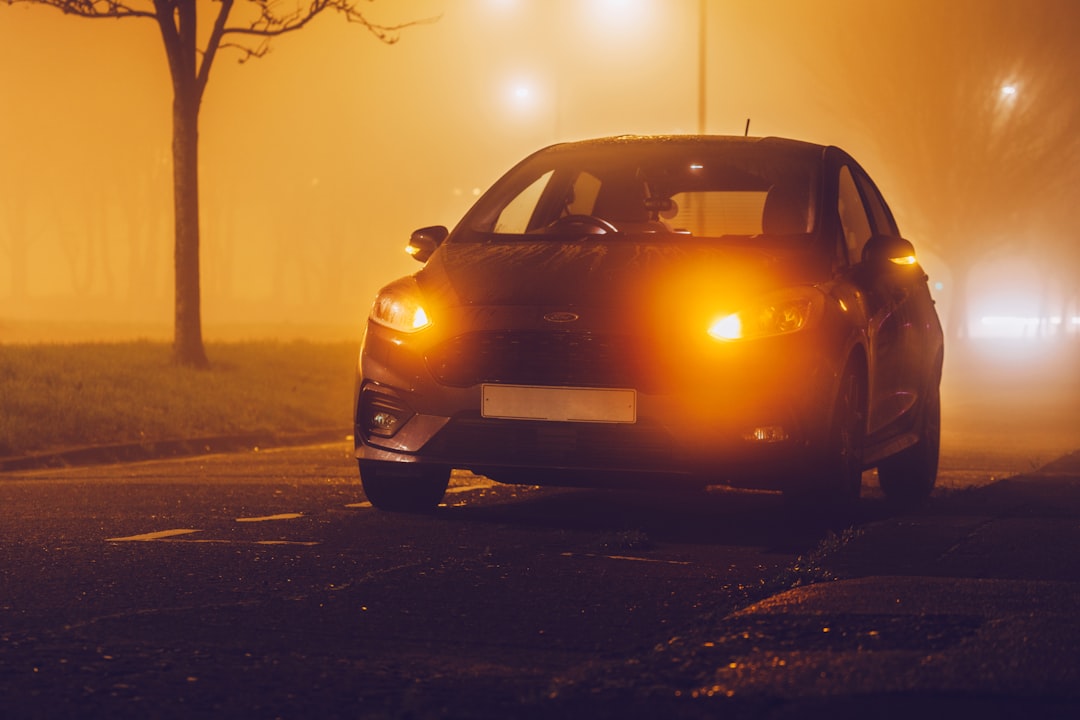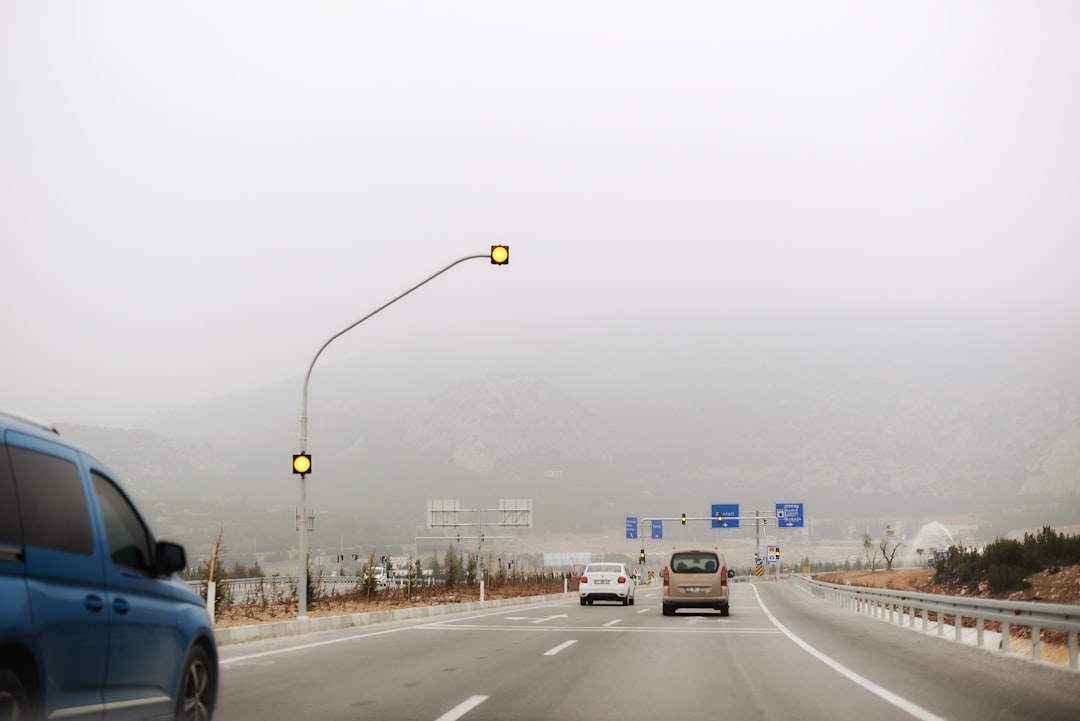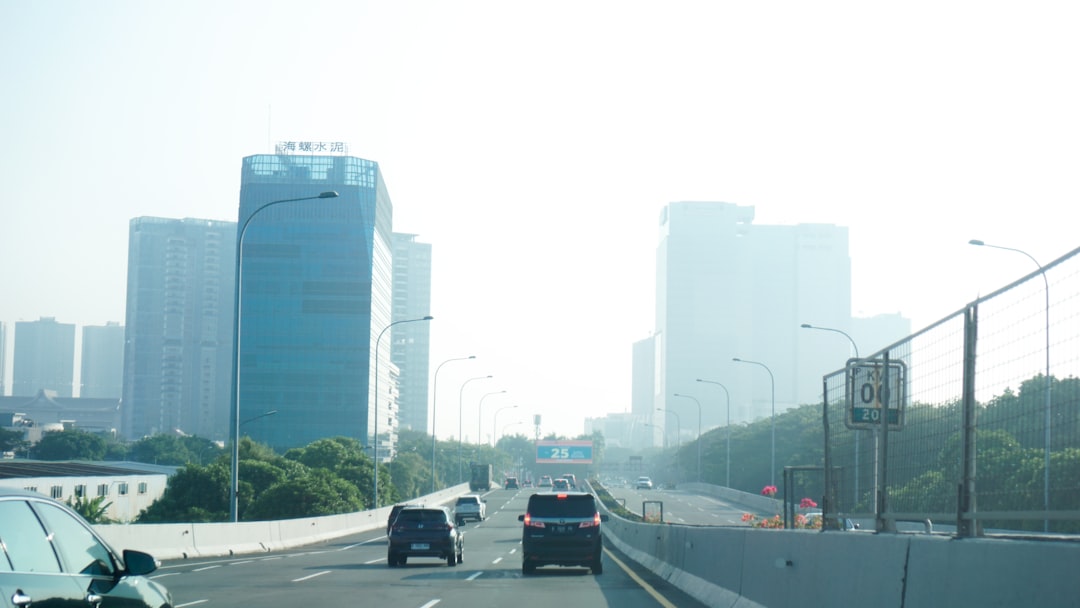

Engage prospects with a scan and streamline customer engagement with FREE QR code marketing tools by Sona – no strings attached!
Create a Free QR CodeFree consultation

No commitment

Engage prospects with a scan and streamline customer engagement with FREE QR code marketing tools by Sona – no strings attached!
Create a Free QR CodeFree consultation

No commitment
QR codes have evolved from a novelty to a strategic powerhouse bridging offline engagement with online action. For auto smog inspection services, QR codes provide a direct, efficient way to engage customers, accelerate appointment bookings, and seamlessly connect physical service locations with digital experiences, all without requiring an app or complex sign-up process.
As emissions testing centers and smog check stations compete for customer attention and operational efficiency, pervasive challenges like inefficient paper processes, missed opportunities to reconnect with high-intent prospects, and gaps in real-time feedback remain top pain points. Integrating QR code technology can help mitigate these issues, simplifying the smog check process, improving customer communications, and transforming formerly overlooked touchpoints into sources of real insight.
By leveraging QR codes in targeted ways, auto smog inspection services can address operational blind spots such as anonymous walk-in visitors who previously fell through the cracks or missed upsell opportunities triggered by customer engagement signals. This guide explores how QR codes in marketing can turn every touchpoint from appointment scheduling to follow-up reminders into a conversion opportunity and generate actionable insights that power smarter, more efficient growth.

QR codes rapidly close the gap between physical touchpoints and digital impact for emissions testing centers. Customers who see a poster, a windshield decal, or a receipt can scan and act instantly. For many service providers, missing high-value prospects remains a recurring headache, particularly when visitors remain untracked and untouched by critical marketing efforts. QR codes change that dynamic by capturing intent at the moment of interest and converting it into measurable outcomes.
Start by mapping your analog processes to digital alternatives. Paper sign-up sheets become mobile-friendly forms that pre-fill your CRM. Printed brochures link to a living landing page that is updated with new regulations, wait times, and offers. Lobby signage routes to online scheduling instead of a phone line that might be busy. With Sona QR, every scan can be tracked, attributed, and synced to your existing systems, so you can see exactly which placements and messages drive appointment bookings, review submissions, and repeat visits. Start creating QR codes for free.
A comprehensive QR platform ensures every touchpoint is optimized and that hard-to-capture, offline customers now enter your remarketing pipeline. By aligning QR placements with known friction points in your journey, you turn lines, counters, parking lots, and mailers into dependable sources of digital conversions.

Auto smog inspection services routinely face missed opportunities because customers interact with offline reminders and stations but never convert online. Walk-ins often leave no digital trace. Appointment cards get lost. Paper brochures are static and quickly outdated. QR codes address these challenges by giving customers a fast way to engage and giving providers a trackable way to measure what works.
Think about the most common interactions in your business. Someone sees a billboard about emissions deadlines, walks into your station after work, or receives a renewal letter from the DMV with your location listed. Each of these is a moment of intent. By placing QR codes on reminders, signage, and handouts, you let customers act in seconds and you collect useful data to improve operations and marketing.
When appointment cards, window decals, emissions reports, and lobby posters become gateways to digital journeys, you get measurable results from every piece of print. The outcome is a connected experience that benefits both your customers and your bottom line.

Choosing the right QR format ensures the experience matches the customer’s context and your business goal. For smog inspection services, the most valuable formats focus on fast booking, information access, and feedback capture. You can deploy a mix of static and dynamic codes depending on whether the destination must be permanent or editable.
Use dynamic QR codes for campaigns that change over time or when you need tracking and analytics. For example, promotions tied to a seasonal emissions deadline or landing pages with updated state rules benefit from dynamic links. Static codes work well for evergreen resources that rarely change, such as a printable pre-inspection checklist.
Auto smog services that replace generic printouts with web-linked or form-enabled QR codes gain account-level insights and pave the way for segmentation and retargeting. With Sona QR, you can manage all formats in one dashboard, update destinations without reprinting, and view performance by placement, device, and time.
Growth constraints in auto smog inspection often stem from overlooked physical touchpoints and missed follow-up on walk-in engagement. The customer might grab a handout without calling, pass your billboards on the freeway, or sit in your lobby without completing a digital form. QR codes help you convert these quiet moments into measurable actions.
Focus on high-visibility locations where customers naturally have their phones out. Ensure the codes are large enough, include a clear CTA, and offer a tangible benefit such as a time-saving pre-check or a discount for booking online. Pair each code with a landing page optimized for a single action so the path from scan to conversion is short and obvious.
Placing QR codes at these natural points of friction recaptures value from walk-ins and previously invisible customer actions. Over time, you will see clearer patterns in which media and messages drive scans, bookings, and reviews.

Operational pain points like unconverted interest and incomplete customer records can undermine both growth and customer experience. QR codes turn these moments into opportunities by making next steps obvious and effortless while collecting useful data for your team.
The best approach is to align each use case with a specific business goal. If your no-show rate is high, steer scans to confirmation flows and reminders. If you want more reviews, prompt feedback at the point of sale. If you want faster throughput, push pre-inspection checklists and mobile intake.
Leveraging QR technology helps convert passive interest into measurable action and ongoing retention. When each scan triggers a helpful, relevant experience, customers are more likely to return and recommend your station to others.
One persistent obstacle for auto smog inspection services is the inability to engage anonymous or passive leads for remarketing. People walk in without booking, pass a billboard, or skim a mailer, then move on. QR scans provide intent-rich signals that traditional analytics often miss because they reveal who engaged, where they were, and what they wanted at that moment.
By deploying unique QR codes across touchpoints, you can build segments that map directly to the buyer journey. Sona QR automatically tags scans by placement, time, and device, then syncs those events to your CRM and ad platforms. The result is a structured dataset that supports relevant follow-up and higher conversion rates.
In this industry, audiences often align with life cycle and vehicle status. Distinguish first-time smog seekers from renewal customers, owners who failed a test from those who passed, and personal vehicles from fleet accounts. Each group needs different content and timing to move forward.
Customers expect a consistent, connected experience across touchpoints, yet many auto smog inspection providers struggle to unify print, digital, and in-person outreach. QR codes fill the void by linking every physical asset to a specific digital destination, then reporting back on what happened next.
The key is to use QR to reduce friction in your existing channels rather than add complexity. Every poster, video spot, or invoice becomes an onramp to a single, useful action. When codes are managed centrally with Sona QR, you can update destinations, compare placements, and sync data to your CRM without redeploying print.
QR codes serve as the offline onramp to your digital marketing engine. With a centralized platform like Sona QR, you can manage all codes, monitor performance across channels, and sync scan data with your CRM and ad platforms to keep the journey connected.
Define your campaign goal with precision. For auto smog inspection services, common goals include increasing appointment bookings during peak renewal periods, reducing no-shows with mobile confirmations, boosting reviews to improve local SEO, or capturing emails from walk-in customers.
Choose your format based on whether you need flexibility and tracking. Dynamic QR codes let you edit destinations, append UTM parameters, and access analytics. Static codes are suitable for permanent resources that do not require updates.
Design for visibility and action. QR codes must be easy to scan from typical viewing distances, match your brand, and include a strong CTA that sets expectations.
Place codes where customers already engage. Start with assets that see consistent traffic and where the next step is obvious, then scale to broader media once your conversion flow is refined.
Treat QR deployment as a measurable campaign. Set baselines, monitor performance by channel and creative, and iterate quickly based on what the data shows.
Auto smog inspection centers have long struggled to attribute offline engagement to digital outcomes, as outlined in Sona’s offline attribution guide. A busy Saturday lobby might look promising, but without tracking, you cannot tell which poster or brochure drove that traffic or how many converted. Modern QR tracking changes that by linking each scan to a specific campaign, placement, and action.
With Sona QR and Sona.com, you can measure the end-to-end funnel from scan to revenue. Capture the scan event, see which device and location were used, connect the scan to a booking or review, and attribute that outcome to a particular asset. Tie these insights back to revenue to inform budgeting and staffing decisions.
The result is clarity. Instead of guessing whether your mailers or lobby posters work, you can see exactly which creative and placements drive outcomes. You can then increase spend on top performers, retire underperformers, and confidently scale your QR program.
QR programs succeed when they are simple for customers and actionable for your team. Avoid overcomplicating the experience. Put codes where they are easy to notice and scan, and make sure the next step is clear and valuable.
Operational alignment matters. Train your staff to reference the codes, explain the benefit, and check that scanners reached the intended destination. Use automation to pick up where human nudges leave off so that every scan triggers an appropriate follow-up.
Small improvements in design and placement often lead to outsized gains. Keep iterating with short testing cycles and let your analytics guide resource allocation.

QR codes are already transforming how emissions testing centers attract and convert customers. The most successful campaigns share a few traits: clear CTAs, valuable destinations, and consistent follow-up supported by integrated tools like Sona QR.
Consider these illustrative examples. Each shows how an analogue moment became a digital conversion with measurable impact and how insights from scans informed smarter decisions.
These examples can be adapted to your market and media mix. The underlying pattern is simple: put QR codes where intent is high, connect them to a single valuable action, instrument them for measurement, and follow up with relevance.
Even well-intentioned QR campaigns can underperform if execution details are overlooked. The most common mistakes include low-contrast designs, small codes placed too high or too low, vague CTAs, and destinations that require pinch-zooming or too many form fields. Each of these adds friction and suppresses conversions.
On the other hand, a few best practices can dramatically increase scan rates and outcomes. Make the code easy to see and scan, set a clear expectation about what happens next, and keep the landing experience focused on one action. Monitor the data, then refine the elements that matter most: placement, copy, incentive, and page design.
QR codes are transforming how auto smog inspection services connect with customers and streamline operations. By addressing operational blind spots such as anonymous visitors, incomplete customer data, and gaps in follow-up, QR codes enable every physical surface to become a data-driven digital access point that drives instant engagement, seamless conversions, and robust tracking from the service bay to the CRM. Whether your goal is to increase booking rates, navigate complex smog check regulations, or enhance the customer journey, a well-integrated QR approach reduces lost opportunities, surfaces actionable engagement signals, and ensures your entire process is measurable and adaptable.
With a dedicated solution like Sona QR for creation, management, and analytics, plus Sona.com for attribution and journey insights, auto smog inspection services are positioned to capture demand, accelerate compliance, and turn every customer interaction into an opportunity for smarter growth.
QR codes have revolutionized auto smog inspection services by transforming traditional check-in and information processes into seamless, measurable customer engagement opportunities. From simplifying appointment bookings to delivering instant access to inspection results and promotions, QR codes drive customer acquisition, enhance the service experience, and boost operational efficiency — all critical for standing out in this competitive industry.
Imagine your customers scanning a code on their vehicle’s inspection report and immediately scheduling their next appointment or accessing exclusive discounts, while you track each interaction to optimize marketing efforts. With Sona QR, you can effortlessly create dynamic, trackable QR codes that update in real time without reprinting, linking every scan directly to your business goals and revenue growth. No more guesswork, just clear insights and powerful conversions.
Start for free with Sona QR today and turn every scan into a loyal customer, a smoother service flow, and measurable growth in your auto smog inspection business.
Auto smog inspection involves scheduling an appointment at a smog check station where your vehicle's emissions are tested to ensure compliance with state regulations.
You can locate nearby smog check stations by scanning QR codes on service reminders, lobby signage, or visiting online directories linked via QR codes provided by inspection services.
Passing a smog check requires your vehicle to meet state emissions standards, which can be verified by following updated inspection checklists accessible through QR codes at stations or on handouts.
Prepare your vehicle by reviewing a state-specific pre-inspection checklist available via QR codes on handouts, emails, or posters, ensuring all required documents and maintenance are in order.
Costs vary by location and services but may include inspection fees, retest charges if the vehicle fails, and potential repair estimates linked through QR codes on emissions reports.
Appointments can be quickly scheduled by scanning QR codes on signs, brochures, or mailers that link to mobile-friendly booking forms, enabling instant online booking without phone calls.
If your vehicle fails, you may receive repair estimates via QR codes on your emissions report and be prompted to schedule a retest appointment through the same digital channels.
Use QR code-accessible inspection tips and checklists to prepare your vehicle properly before the test and ensure all emissions-related systems are functioning correctly.
Smog checks help reduce harmful vehicle emissions, improving air quality and public health by ensuring that cars meet environmental standards.
QR codes streamline appointment scheduling, provide access to updated regulations and prep checklists, collect customer feedback, track marketing effectiveness, and integrate data with CRM systems for better service.
Use Sona QR's trackable codes to improve customer acquisition and engagement today.
Create Your FREE Trackable QR Code in SecondsJoin results-focused teams combining Sona Platform automation with advanced Google Ads strategies to scale lead generation

Connect your existing CRM

Free Account Enrichment

No setup fees
No commitment required

Free consultation

Get a custom Google Ads roadmap for your business






Launch campaigns that generate qualified leads in 30 days or less.
